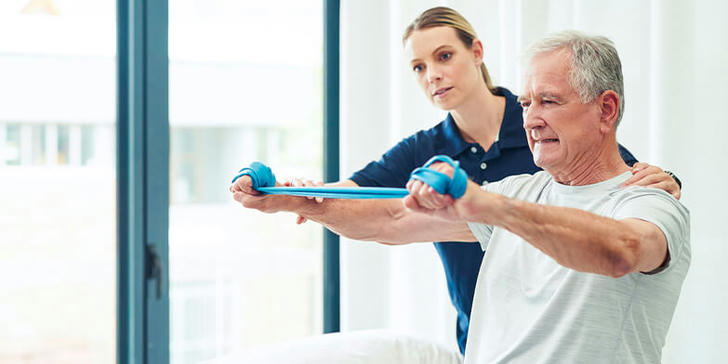How can patients with heart disease conduct daily home exercises?
Heart disease is a leading cause of morbidity and mortality worldwide. After experiencing heart issues, such as a heart attack or heart surgery, patients often face a challenging recovery process. Rehabilitation training plays a crucial role in helping individuals regain their strength, improve their cardiovascular health, and reduce the risk of future heart problems.

Common Issues During Recovery from Heart Disease
1. Physical Limitations: After a heart event, patients may experience fatigue, weakness, and decreased physical endurance. These limitations can make it difficult to perform daily activities.
2. Emotional Challenges: Many patients experience anxiety, depression, or fear related to their heart condition. These emotional challenges can hinder motivation and overall recovery.
3. Dietary Changes: Patients are often advised to adopt a heart-healthy diet, which can be overwhelming and confusing. Understanding what foods to eat and avoid is essential for long-term health.
4. Medication Management: Patients may need to take multiple medications post-recovery, which can lead to confusion about dosages and side effects.
5. Lifestyle Modifications: Making long-term changes such as quitting smoking, increasing physical activity, and managing stress can be difficult for many individuals.
Targeted Rehabilitation Exercises
Rehabilitation for heart disease patients typically involves a structured program that includes various types of exercises tailored to individual needs:
1. Cardiovascular Exercise
Walking: One of the simplest and most effective forms of exercise for improving cardiovascular health. Start with short walks and gradually increase duration and intensity.
Cycling: Stationary cycling is an excellent way to improve endurance without putting too much strain on the joints.
Swimming: A low-impact option that provides a full-body workout while being gentle on the heart.
2. Strength Training
Resistance Bands: Using bands for strength training helps build muscle without heavy weights. Exercises can include seated rows or leg presses.
Light Weights: Incorporating light dumbbells into workouts can enhance muscle strength; exercises like bicep curls or shoulder presses are beneficial.
3. Flexibility and Balance Training
Stretching Exercises: Gentle stretching can improve flexibility and reduce muscle tension.
Yoga or Tai Chi: These practices promote relaxation, balance, and flexibility while also helping to manage stress.
4. Education on Lifestyle Changes
Patients should participate in educational sessions that cover topics like nutrition, stress management techniques, and medication adherence.
Real-Life Case Examples
1. Case Study of a 62-Year-Old Male
A 62-year-old male suffered a heart attack and was enrolled in a cardiac rehabilitation program after his hospital discharge. His rehabilitation included supervised exercise sessions focusing on cardiovascular fitness through walking on a treadmill and cycling on stationary bikes. He also participated in strength training using resistance bands twice a week. After three months of consistent rehabilitation, he reported increased energy levels and improved endurance during daily activities.
2. Case Study of a 48-Year-Old Female
A 48-year-old female underwent coronary artery bypass surgery (CABG). Post-surgery, she experienced anxiety about her health and physical limitations. She joined a cardiac rehab program that included group therapy sessions to address emotional challenges alongside physical training. Her exercise regimen included walking on the treadmill and participating in yoga classes for stress relief. After six months of rehabilitation, she not only improved her physical fitness but also reported feeling more confident in managing her health.
Recommended Products for Rehabilitation
1. Heart Rate Monitors
Useful for tracking heart rate during exercise to ensure patients are exercising within safe limits.
2. Resistance Bands
Ideal for strength training at home.
3. Stationary Bikes
Great for low-impact cardiovascular exercise.
4. Yoga Mats
Essential for stretching and yoga exercises.
5. Healthy Cookbooks
For learning about heart-healthy cooking.
6. Stress Management Apps
Apps that provide guided meditations and relaxation techniques.
Conclusion
Rehabilitation after heart disease is essential for recovery and improving quality of life. By addressing physical limitations through targeted exercises, emotional challenges with support groups, dietary changes with educational resources, and utilizing recommended products, patients can make significant progress in their recovery journey.
It is crucial for individuals recovering from heart disease to consult healthcare professionals before starting any new rehabilitation program or using specific products to ensure they are appropriate for individual needs. With the right support and resources, individuals recovering from heart disease can regain their independence, improve their overall well-being, and reduce the risk of future cardiac events through effective rehabilitation training strategies tailored to their specific challenges and goals.
By committing to a comprehensive rehabilitation program that includes physical activity, emotional support, dietary education, and lifestyle modifications, patients can successfully navigate their recovery journey and lead healthier lives post-heart disease diagnosis or treatment.
